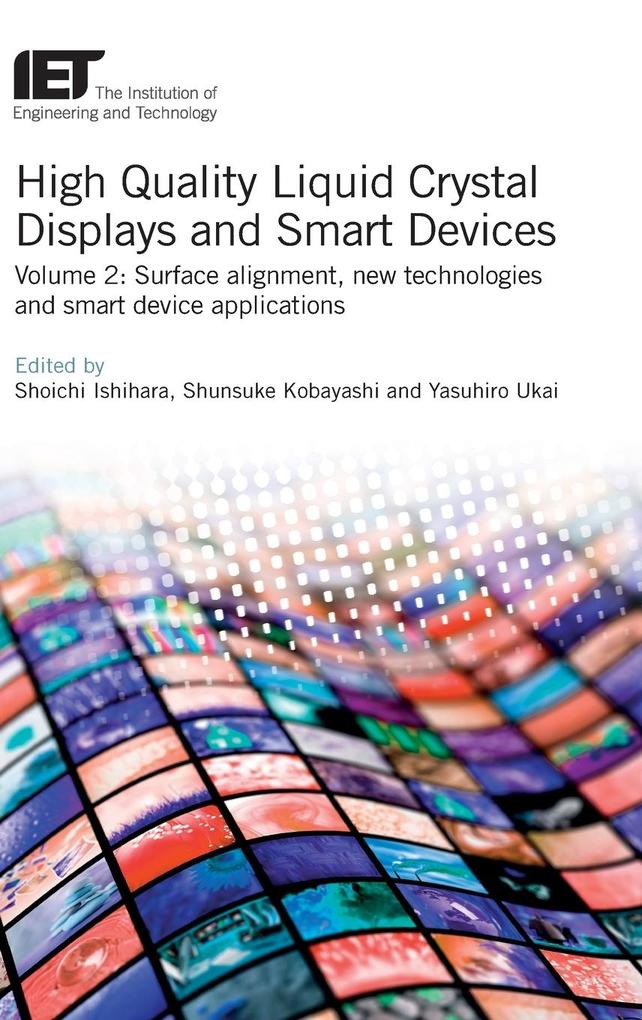
Zustellung: Fr, 01.08. - Mi, 06.08.
Versand in 2 Wochen
VersandkostenfreiBestellen & in Filiale abholen:
A liquid-crystal display (LCD) is a flat-panel display or other electronically-modulated optical device that uses the light-modulating properties of liquid crystals. Liquid Crystal Displays are already widely used in consumer electronics, but research and development is still ongoing. The shifting focus of research follows a pattern of improved definition, increased display size, wider viewing angles and faster responses, with improvements in each area influencing the next. There is also growing interest in the use of liquid crystal materials in novel applications including sensing devices, spatial modulators and light-shielding windows.
This book discusses the latest LCD technologies, with their challenges, opportunities, and problems to be solved, at a level suited to an academic and research-professional audience. There is a particular focus on display quality such as image sticking, contrast ratio and colour hue that has not been dealt with thoroughly elsewhere. Current and future trends in liquid crystal materials and technologies based on their evolving role and new applications are discussed in detail.
This book discusses the latest LCD technologies, with their challenges, opportunities, and problems to be solved, at a level suited to an academic and research-professional audience. There is a particular focus on display quality such as image sticking, contrast ratio and colour hue that has not been dealt with thoroughly elsewhere. Current and future trends in liquid crystal materials and technologies based on their evolving role and new applications are discussed in detail.
Inhaltsverzeichnis
- Chapter 1: Evolution of alignment material technology
- Chapter 2: Photo-alignment technology for vertically aligned LCDs
- Chapter 3: Azo-dye photoalignment materials
- Chapter 4: Alignment materials and their surface deformation induced by manufacturing processes
- Chapter 5: Analysis and inspection of alignment membrane in LCDs
- Chapter 6: Electrical evaluation of alignment layers and LC panels
- Chapter 7: Analysis method of image sticking
- Chapter 8: New alignment process and its application
- Chapter 9: Liquid crystal self-alignment technology
- Chapter 10: Color-reflective LCD based on cholesteric liquid crystals
- Chapter 11: Enhancement of optical output and low-power consumption in nanoparticle-embedded liquid crystal devices
- Chapter 12: Ferroelectric micro LC display
- Chapter 13: LC GRIN lens technology
- Chapter 14: Essence and practical use of field-sequential colour LCD
- Chapter 15: Color breakup reduction in field-sequential color LCDs
- Chapter 16: Field-sequential full colour displays using polymer-stabilised ferroelectric LCD
- Chapter 17: Optical security devices using UV-curable nematic liquid crystals
- Chapter 18: Application of liquid crystals to MEMS
- Chapter 19: Detection of volatile organic chemicals by using liquid crystals
- Chapter 20: Smart windows
- Chapter 21: Antenna technology for satellite communications
Produktdetails
Erscheinungsdatum
18. April 2019
Sprache
englisch
Seitenanzahl
408
Reihe
Materials, Circuits and Device
Herausgegeben von
Shoichi Ishihara, Shunsuke Kobayashi, Yasuhiro Ukai
Verlag/Hersteller
Produktart
gebunden
Gewicht
1071 g
Größe (L/B/H)
240/161/30 mm
ISBN
9781785619236
Entdecken Sie mehr
Bewertungen
0 Bewertungen
Es wurden noch keine Bewertungen abgegeben. Schreiben Sie die erste Bewertung zu "High Quality Liquid Crystal Displays and Smart Devices: Surface Alignment, New Technologies and Smart Device Applications" und helfen Sie damit anderen bei der Kaufentscheidung.









